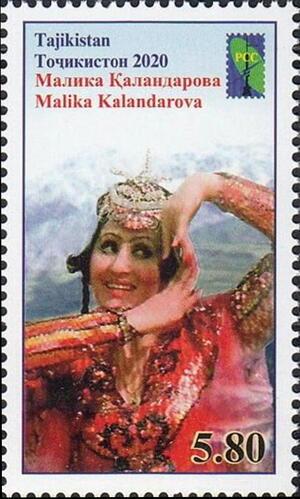Bukharan Jewish dancer Malika Kalontarova is born
Renowned Bukharan dancer Malika Kalontarova was born on September 2, 1950, to a religious Bukharan Jewish family in Tajikistan. Her father urged her to pursue a career in hairdressing much like her other sisters. From the beginning, however, she insisted on dancing.
At age fifteen Kalontarova joined the Lola Dance Ensemble, later changing groups to join the Song and Dance Ensemble of the Tajik Philharmonic. Claiming that her original name of Mazol sounded “too Jewish,” her director asked her to change it to “Malika,” the Arabic word for queen, as she danced like a queen. Despite the name change, Kalontarova did not shy away from her Jewish identity, even in a society that was less than accepting. In an interview, she stated, “Most Jewish people [in Tajikistan] say they are Tajik or they are Russian because Jews get no good work, no good pay. But once I’m famous, I’m not afraid. I say, ‘Me Jewish’” (Kalish, 2003).
Kalontarova quickly became one of the most famous performers in the Soviet Union and across central Asia. She went on to tour all over Asia and even appeared in a few Bollywood films in the 1970s, as well as in Tajik films before the fall of the USSR. She has been recognized for her cultural significance through several awards, including People’s Artist of the USSR in 1984. According to world-renowned folk dance director, Igor Moiseyev, Malika is an “eastern miracle” who revolutionized Asian popular dance.
Malika married Ilyas (Ishaq) Gulkarov, a Bukharan Jewish musician, and they subsequently toured central Asia together. After the collapse of the Soviet Union, the couple and their two sons emigrated to Queens, New York. Queens now has a population of 50,000 Bukharan Jews, earning it the nickname “Queenistan.” Kalontarovo now operates a dance studio in Queens and is a vocal advocate for her community.
Sources:
Kalish, Jon. “Immigrants in Their Own Words”. Forward, October 17, 2003. https://forward.com/news/6885/immigrants-in-their-own-words/
Win, Hanna Ingber. “Bukharian Jews protect their culture in a N.Y. enclave.” Haaretz, October 21, 2009. https://www.haaretz.com/2009




Thank you for articles about the traditions of dance and those who carry it in the many expressions of Jewish culture.